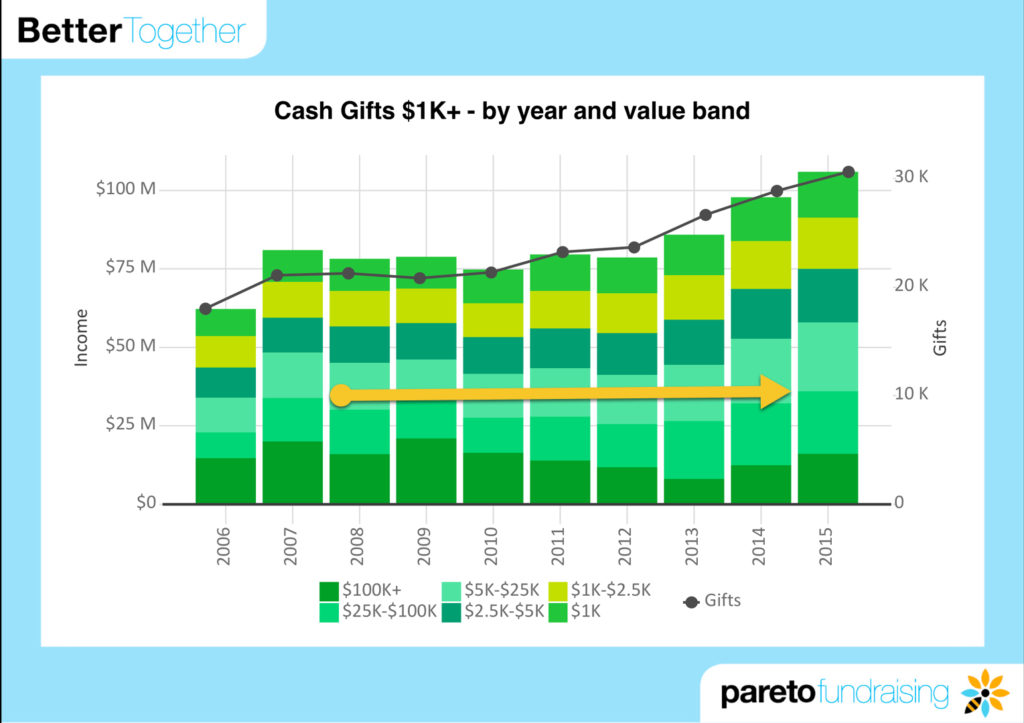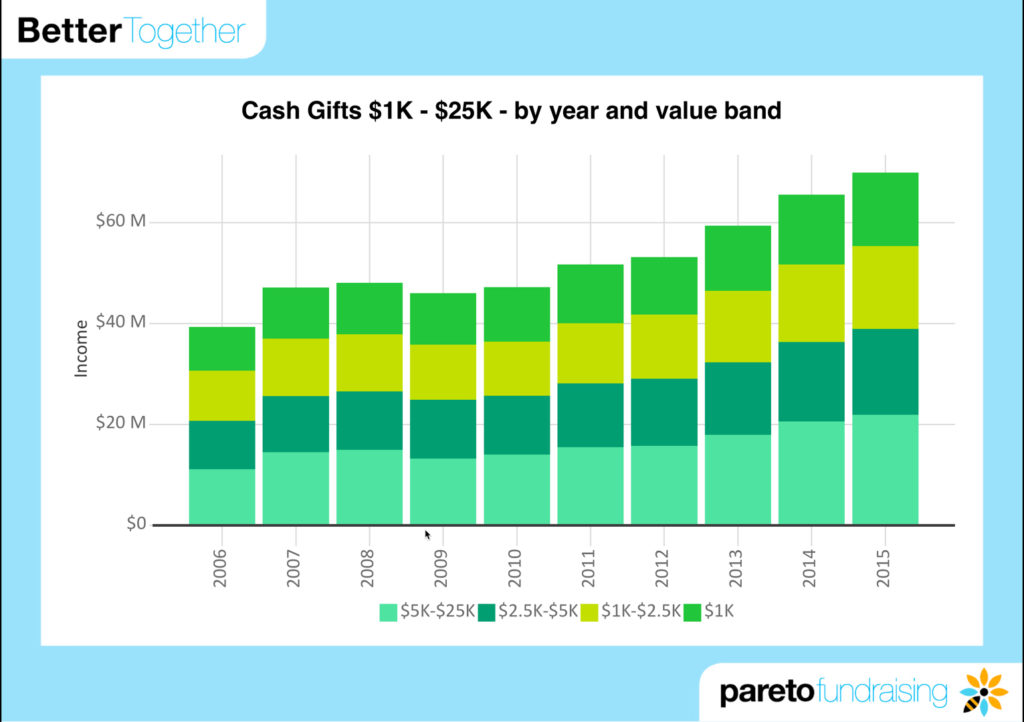Firstly, well done for reading past the title of this article. The word Math can scare many fundraisers away.
But you and I know that any serious fundraiser needs to understand the numbers behind fundraising.
And this is rather easy math, I think you’ll agree.
In the years that I have been working in fundraising, I have noticed that many major donor programs fail.
You have probably noticed that many mega-donations go to universities, hospitals, schools, zoos and other institutions. It’s far less common for ‘classic’ charities like Make A Wish, Cancer Research, WWF and Save the Children to get these mega gifts. Usually only if they are running a capital campaign.
Yet generally when we start a major donor program, we think big! Maybe not $5 million from Dick Smith, Richard Branson or Bill Gates BIG, but certainly aiming for gifts over $100,000. And mostly our aim misses. Badly.
Of nearly 100 Australian charities, including most of the top thirty fundraising charities, we see little income from $100,000 plus donations. Even drilling down to $25,000 plus we don’t find a growing pot of gold.
Note the chart below showing these charities just over $30 million from donors giving more than $25,000 (follow the arrow) in 2007 It was about the same in 2015.

Data courtesy of Pareto Fundraising’s brilliant benchmarking project.
In the same time frame, total revenue from individuals grew from $800 million to $1.4 billion in Australia. Clearly, we are underperforming in the higher value areas.
When a charity has a major donor strategy, most are aimed at donations above $25,000. But there’s a lot of benefit in working with donors who give less than that.
Some charities have done so much better by setting up systems and processes to grow the donations of people around $1,000 to $25,000 through a combination of better direct mail, stewardship and visiting.
The growth in this area is much better.
The chart below shows growth from about $40 million to nearly $70 million:

I don’t think we should ignore the potential from the group of donors giving at levels above $25,000 but we certainly should think about the group a little below that first.
Why?
There are more of them. It is easier to reach them. And I know that you can get results very, very quickly for your cause.
For any charity with individual donors, action on this group is the quickest, cheapest and easiest way to boost funds.
Sean
Want to know more? Then please join The Fundraisingology Lab.








2 Comments. Leave new
Hi Sean, I really enjoyed the 1st webinar on mid level donors and I learned lots. But what advice do you have for identifying mid level donors when half of your database of active doors are either child sponsors or are already making regular monthly payments.
Thanks
Thanks!
Well, I would say that all sponsors are ‘mid-value’ already, but they need a different approach. They are unique, and different to ‘normal’ regular givers and one-off donors.
However, the approach in prioritising is the same. Run RFV on them separately to the one off donors. You will still get a ‘rank’. Mid-value programs for these RGs is actually quite different: Another course!
However, for those who donate one-off occasionally, as well as monthly gifts, you can include those one-off gifts in your RFV assessment of one-off donors. You ignore the monthly gifts amounts, and just flag them as current or lapsed monthly donors and new or >12 months. The FACT that they are a monthly donor as well is good, but those one-off gifts tell you if a bigger one off gift is worthwhile. I have a blog about which is most likely to donate a big one off gift: Someone who donates $1000 once a year, or someone who sponsors kids, donating well over $1000 every year. Look out for it!